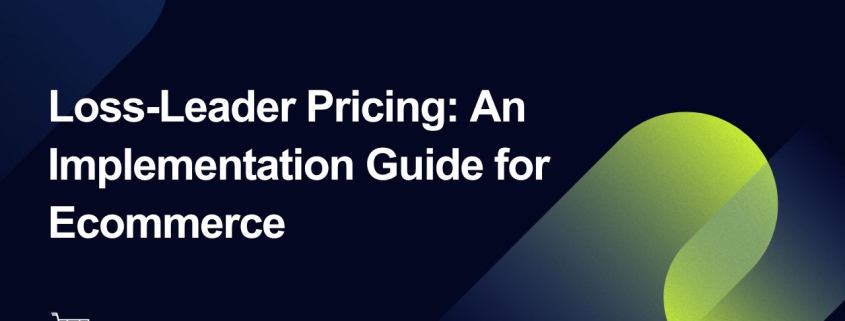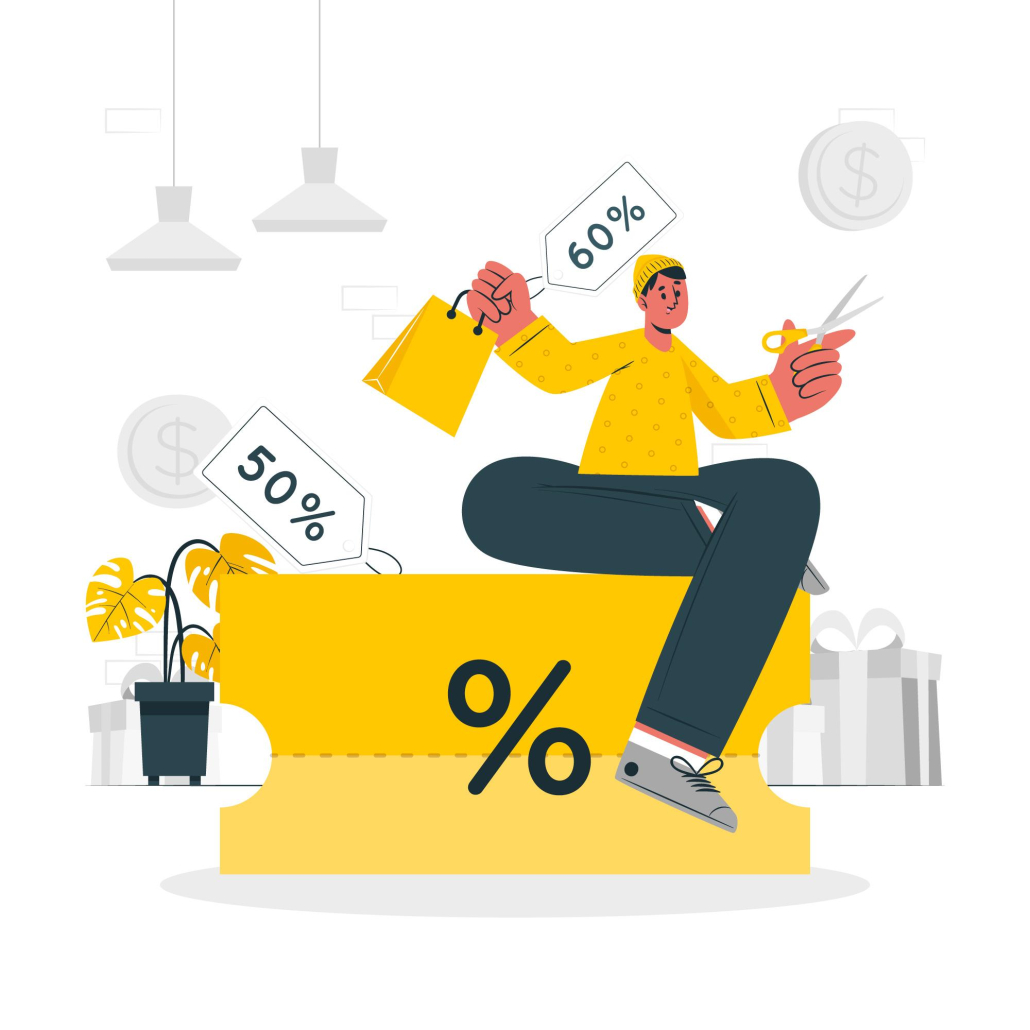Loss-Leader Pricing: An Implementation Guide for Ecommerce
Introduction
Price wars and market saturation are todays norm. Hence, every online retailer strives to gain a competitive edge. They implement strategies to gain customer attention and expand their business. One strategy that has stood the test of time is loss-leader pricing. It’s a tactic that, when used wisely, can lead to remarkable success. But what exactly is loss-leader pricing, and how can you implement it effectively in your ecommerce business? Let’s delve into the intricacies of this strategy, explore when and how to use it, tackle the associated risks and challenges, and learn how to measure success.
1. What is Loss-Leader Pricing?
Loss-leader pricing is a pricing strategy in which a business intentionally sells a product or products at a price lower than their cost. The idea is to entice customers with these irresistible deals, with the expectation that they will make additional purchases, ultimately driving up the overall profit margin.
What type of objective could be reached
The primary objective of employing loss-leader pricing is not immediate profitability on the discounted item but rather customer acquisition and retention. By offering a product at a compellingly low price, you can attract new customers and encourage existing ones to keep coming back. The long-term goal is to build customer loyalty and increase the lifetime value of each shopper.
2. When to Use Loss Leader Pricing?
Loss-leader pricing is not a one-size-fits-all strategy. It’s most effective under certain circumstances:
Market Entry: When you’re entering a highly competitive market, offering loss-leaders can help you gain a foothold and grab attention.
Imagine you’re launching an e-commerce platform for premium skincare products in a market saturated with established brands. To gain a foothold, you could offer a highly popular skincare item at a significant discount as a loss-leader. This not only attracts potential customers to your website but also introduces them to your range of premium products.
Seasonal Promotions: During peak shopping seasons like Black Friday or Cyber Monday, using loss-leaders can drive traffic to your site and boost sales across your product range.
Suppose you run an online clothing store, and it’s the holiday season. To drive traffic and boost sales, you could use loss-leader pricing on a select range of holiday-themed clothing or accessories, such as festive sweaters or holiday-themed socks. While you may not make much profit on these items, they can attract shoppers who then explore and purchase other non-discounted items from your store.
Clearing Excess Inventory: If you have excess stock that needs to be moved quickly, using loss-leaders can help you recoup some costs.
If you have excess inventory of a specific out of trend electronic gadgets, for instance, you might choose to price it as a loss-leader to clear the surplus quickly and make room for new products.
Or even grocery items that might expire soon can be sold quickly with loss-leader strategy.
Customer Acquisition: When your main goal is to attract new customers, loss-leader pricing can be a powerful magnet.
On launching a subscription-based e-learning platform, your primary goal is to acquire new students. Offering a free or heavily discounted introductory course as a loss leader can entice potential learners to sign up. Once they experience the quality of your courses, they may be more inclined to subscribe to your premium content.
3. How to Implement Loss Leader Pricing in Ecommerce
Implementing loss-leader pricing successfully in ecommerce requires a well thought out plan:
Select the Right Products
Selecting the right products for a loss-leader pricing strategy involves a thorough analysis of your product portfolio. Look for high-demand items, especially those with seasonal appeal or the potential to lead to additional purchases. Consider customer acquisition costs and ensure selected products have reasonable profit potential in the long run. Pay attention to inventory, supply chain, and legal restrictions while monitoring competitors’ strategies. Run small-scale tests, gather customer feedback, and be ready to adapt the strategy based on performance. The goal is not just to sell discounted products but to attract new customers, boost complementary sales, and increase overall profitability while staying aligned with your business objectives.
e.g., Printers, being essential office equipment, enjoy steady demand, particularly in the business sector. Customers purchasing printers often need ink cartridges, paper, and cables, which offer higher profit margins. Seasonal trends, like back-to-school and holiday seasons, can spur additional purchases when discounts are applied. Discounted printers help mitigate the costly customer acquisition in the office equipment market while also holding profit potential in ongoing sales of ink cartridges and supplies. Adequate inventory and supply chain management are crucial to meet increased demand during promotions.
Pricing Strategies
Determine the discount percentage carefully. Consider cost-plus pricing, psychological pricing, and competitive analysis to set the right price point. And, to do that employ competitive monitoring tools like myPricing/myMarket that provides the prices of your competitors present in your marketplaces or globally.
Promotion and Visibility
Utilize various marketing channels, including email campaigns, social media, and pay-per-click advertising, to promote your loss-leader products.
Timing and Duration
Decide when to run the promotion and how long it should last. Create a sense of urgency to encourage immediate action.
4.Risks and Challenges using Loss-Leader Pricing
While loss-leader pricing can be advantageous, it’s not without risks:
Profit Protection Measures
Implement safeguards to limit losses, such as setting a maximum loss threshold or closely monitoring inventory.
Competitive Response
Be prepared for competitors to react. Monitor their actions and adjust your strategy accordingly.
Legal and Ethical Considerations
Understand pricing regulations in your jurisdiction and ensure transparency and fairness in your pricing practices.
5.How to Measure Success when Implementing Loss-Leader Pricing
When implementing a loss-leader pricing strategy in e-commerce, it’s essential to measure its success using various key metrics:
Customer Acquisition Cost (CAC): Calculate how much you’re spending to acquire each new customer through loss leader promotions. For instance, if you spend $500 on advertising and discounted products and gain 100 new customers during a promotion, your CAC is $5 per customer. Monitoring this metric helps ensure that the cost of acquiring customers through loss-leaders aligns with your overall marketing budget and profitability goals.
Repeat Purchase Rate: This metric measures the percentage of customers who return to make additional purchases after the initial loss-leader sale. Let’s say you offered a discounted smartphone as a loss-leader, and 30% of customers who purchased it came back within three months to buy accessories or other higher-margin products. A high repeat purchase rate indicates that your loss-leader successfully attracted loyal customers who continue to engage with your brand.
Average Order Value (AOV): Analyze whether customers are adding higher-margin products to their carts along with the loss leader item. For instance, if you discounted a laptop as a loss leader and customers frequently add accessories like bags or software to their orders, your AOV remains healthy. A higher AOV suggests that your loss leader effectively encourages customers to explore and purchase other items from your store.
Return on Investment (ROI): Determine the overall return on investment for your loss leader campaigns. Calculate the total revenue generated from the promotion, subtract the cost of the discounted products and marketing expenses, and then divide by the total cost. If your ROI is positive, it means your loss leader strategy is profitable. However, keep in mind that the real value of a loss-leader may extend beyond immediate profits, such as long-term customer retention and brand loyalty.
As an online electronics retailer, offering a discounted smartphone during Black Friday initially incurs higher CAC due to marketing costs. Yet, many return customers buy accessories and subscribe to your newsletter, indicating a successful repeat purchase rate. AOV stays strong with bundled purchases. The positive ROI, factoring in customer lifetime value and ongoing engagement, showcases the strategy’s success in retaining valuable customers.
6.How to Handle Competition that Uses Loss-Leader Pricing
When competitors adopt similar strategies, differentiate your brand by focusing on exceptional customer service, product quality, and unique selling points. Highlight the value customers receive beyond just low prices.
7.Conclusion
In conclusion, loss-leader pricing can be a game-changer for your ecommerce business when used strategically. It’s not about sacrificing profits but about investing in customer relationships and long-term success. By selecting the right products, employing effective pricing strategies and tools, and measuring results, you can navigate the challenges and outshine competitors. Embrace loss-leader pricing as a powerful tool in your ecommerce arsenal, and watch your business prosper in the dynamic online marketplace.




